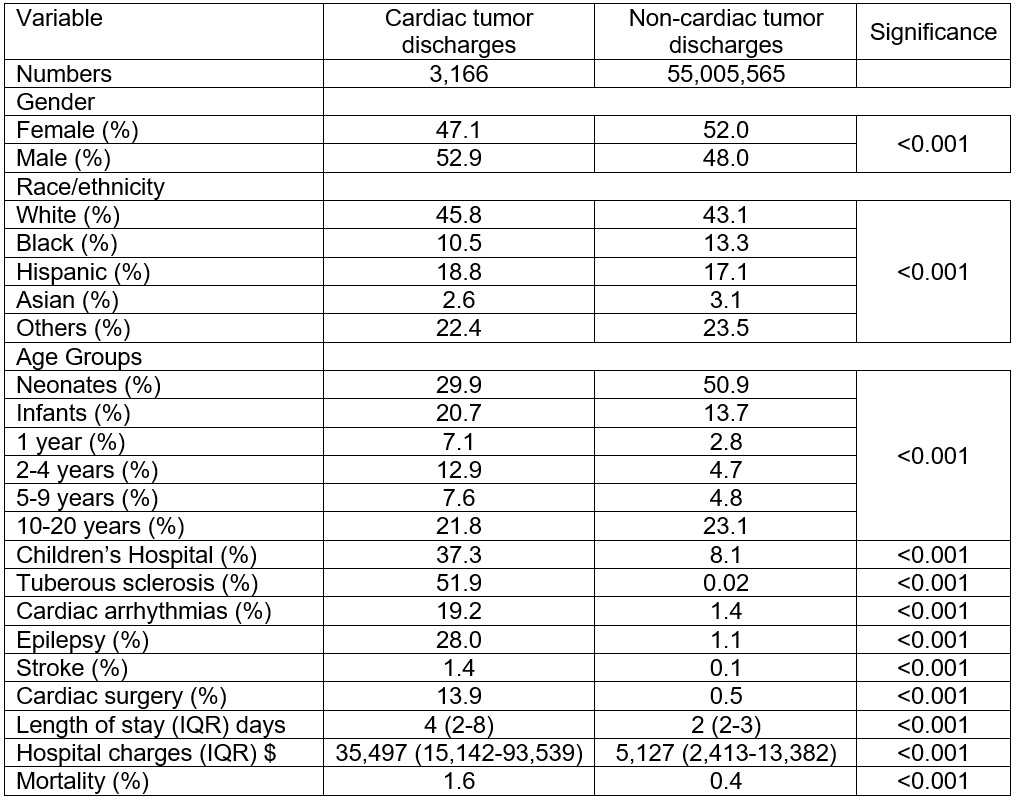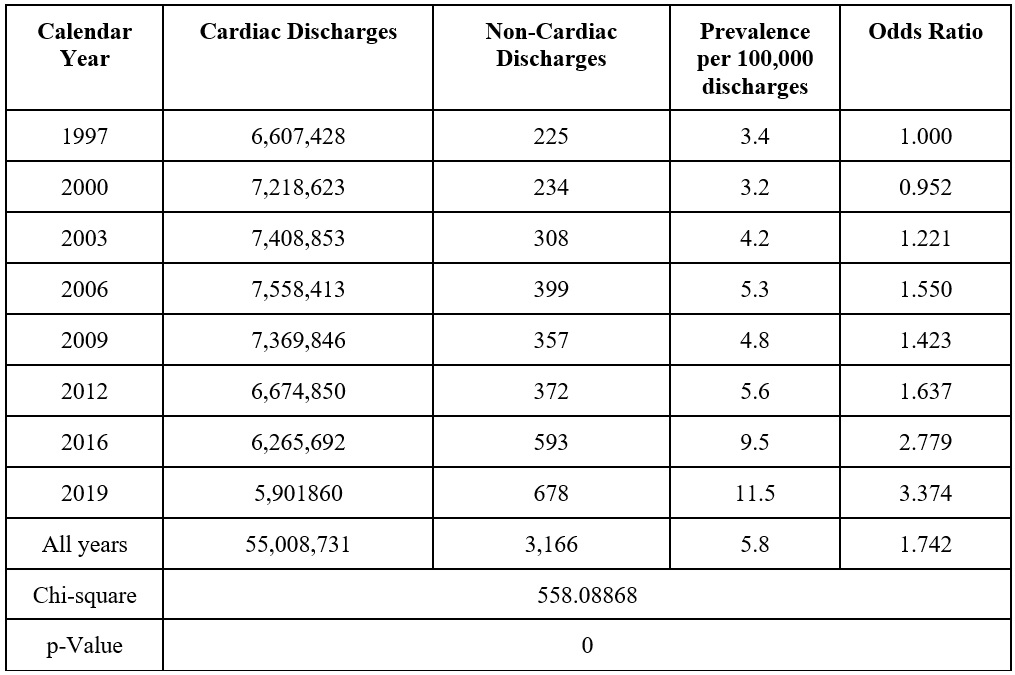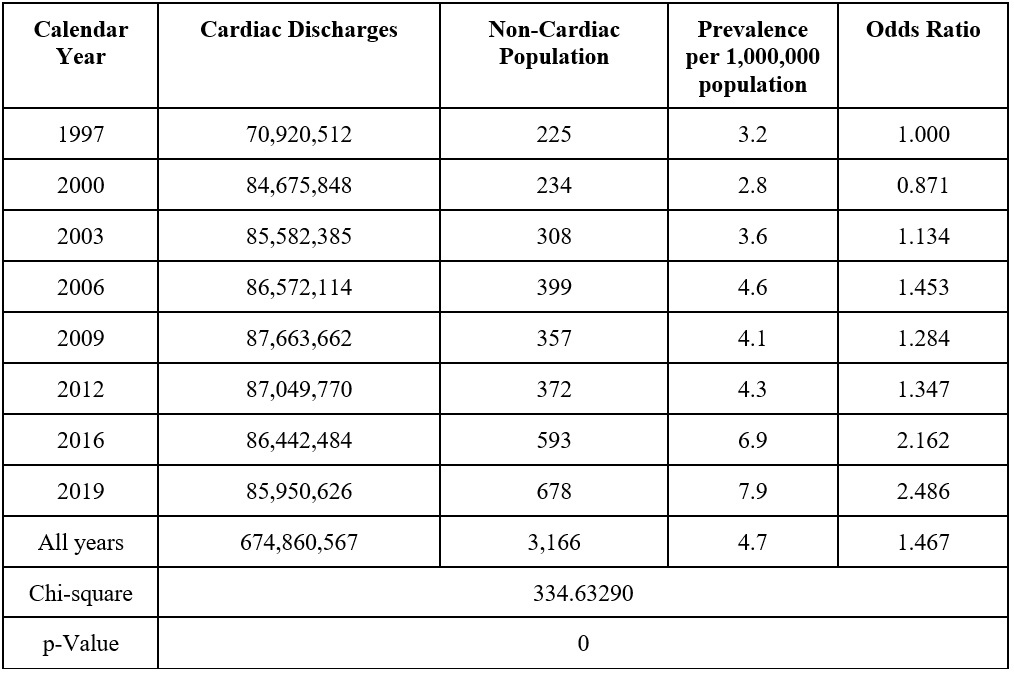Cardiology
Session: Cardiology 2
153 - Demographic and clinical characteristics of children with primary cardiac tumors hospitalized from 1997 to 2019 in the United States
Monday, May 6, 2024
9:30 AM - 11:30 AM ET
Poster Number: 153
Publication Number: 153.3036
Publication Number: 153.3036
.jpg)
Seevitha Totapalli (she/her/hers)
Student
University of Toronto
Toronto, Ontario, Canada
Presenting Author(s)
Background: Cardiac tumors in children, although rare can lead to obstruction of valves or cardiac conduction problems. Most reports on pediatric cardiac tumors are case reports or single-center case series. There is a lack of large multi-site or national data on pediatric cardiac tumors.
Objective: The objective of this study was to determine the prevalence of hospitalizations in children with primary cardiac tumors from 1997 to 2019 in the U.S. and analyze the demographic and clinical characteristics of children with cardiac tumors.
Design/Methods: We conducted a cross-sectional analysis using the Kid's Inpatient Database (KID) for the years 1997 to 2019 to determine the prevalence of hospitalization of children with a diagnosis of primary cardiac tumors. The Healthcare Cost and Utilization Project (HCUP) publishes KID every 3 years. We have used 8 years of data available from HCUP for this study. Children with cardiac tumors were identified using ICD-9 and ICD-10 diagnosis codes. The prevalence is presented per 100,000 hospital discharges and 1,000,000 age-specific US population. The Chi-square and Mann-Whitney U tests were used to compare the discharges with and without cardiac tumors for demographic and clinical variables. The Chi-square for linear trend (Extended Mantel-Haenszel) test was used for trend analyses. Hospital charges were inflation-adjusted for 2019. IRB determined this as an exempt study.
Results: There were 3166 discharges with primary cardiac tumors out of a total of 55.9 million discharges with a hospitalization rate of 5.8 per 100,000 discharges and 4.7 per million U.S. children. Out of all children with cardiac tumors, 29.9% were neonates, 20.7% were infants, and 71% were children less than 5 years of age. Demographic and clinical characteristics are presented in Table 1. An increase in the prevalence of cardiac tumors from 1997-2019 was observed (p < 0.001; Tables 2 & 3). 88.9% of cardiac tumors were reported benign. Cardiac arrhythmias were reported in 19.2%, seizures in 28%, and stroke in 1.4%. 51.9% of cases had underlying tuberous sclerosis. Cardiac surgical procedures were performed with 13.9% of patients.
Conclusion(s): We are presenting findings from our analysis of multi-year data on pediatric hospital discharges in the United States. Primary cardiac tumor is a rare condition in children and is most frequent in neonates and young children. The majority of cardiac tumors in pediatric patients are benign, and many are associated with tuberous sclerosis. There is a temporal increase in the hospital prevalence of primary cardiac tumors.



